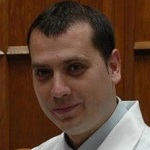Professional development of radiotherapists in Serbia - PDF Version
Recognition of the role and improvement of the position of radiation therapists (RTTs) in Serbia began in 2008 with the participation of Serbian RTTs in the course entitled Best Practice in Radiation Oncology: Train the RTT Trainers (TTT), which was organised by the European SocieTy for Radiotherapy and Oncology (ESTRO) with the International Atomic Energy Agency (IAEA).
In this invaluable course, we acquired the knowledge and skills needed to improve the RTT profession in Serbia.
The products of participation in the TTT course are listed here:
- The Serbian Society of Radiotherapy Technicians was established in 2009. During the 13 years of the society's existence, we have organised educational courses and congresses that have involved international participation, from colleagues in the region and Europe.
- The RTTs from the region who participated in the TTT project worked together to create and realise the first regional congress (South East Europe Technology in Radiation Oncology, or SEETRO), which was held in 2013 in Belgrade.
- The Serbian Society of Radiotherapy Technicians has been a member of the ESTRO RTT Alliance since 2017.
Improvement of the radiotherapy system in Serbia, through the procurement of new radiotherapy devices, equipment and technologies, has enabled continual progress and the introduction of new radiotherapy techniques in accordance with international standards.
As a consequence of technological progress, there was a need for the development of national protocols and additional education of RTTs. This was achieved in the form of a new study programme, which was introduced at the medical faculty of the University of Belgrade and led to the qualification of Master Professional Radiation Therapist.
Development of national RTT protocols
In order to ensure the same quality of work in all radiotherapy centres in Serbia and to define clearly the role of RTTs in procedures that they perform independently or in a team with radiation oncologists and physicists, it was necessary to create uniform national protocols.
The protocols offer a clear and precisely defined description of the work process and therefore a unique guide for all RTTs in all centres. They delineate these key responsibilities of the RTT in the radiotherapy team:
‑ patient preparation;
‑ immobilisation of the patient;
‑ preparation of images for planning;
‑ preparation of treatment;
‑ verification; and
‑ implementation of radiotherapy treatment.
This application of the same principles of work and use of the same equipment in certain cancer localisations leads to the performance of radiotherapy treatment in the same way in all radiotherapy centres in Serbia.
The protocols apply to the treatment of cancer in the seven most common body areas: the head and neck, breast, lung, central nervous system, urological region, digestive tract and gynaecological region. The protocols also cover stereotactic body radiation therapy, stereotactic radiotherapy and respiratory techniques.
RTTs from all radiotherapy centres in Serbia participated in the development of the protocols. These centres are: the Institute of Oncology and Radiology of Serbia, the Institute of Oncology of Vojvodina, Clinical Center Nis, Clinical Center Kragujevac, and Institute for Lung Diseases of Vojvodina, Health Center Kladovo, Military Medical Academy, and the Department of Radiosurgery Clinical Center of Serbia.
New study programme
In today's healthcare system, it is necessary to provide professional development for RTTs so that they can acquire knowledge, skills and qualifications that meet the demanding standards of radiotherapy.
In Serbia, RTTs are taught through a three-year education programme within the Academy of Vocational Studies at the Health College. Students graduate with the title of Professional Medical Radiologist, which offers 180 points on the European credit transfer and accumulation system (ECTS) and they can work in diagnostics, nuclear medicine or radiotherapy.
In recent years, the development of radiotherapy techniques, which are based on the use of high-tech radiation devices, has set new, important conditions in the everyday work and education of RTTs and has shown the need for additional training of RTTs. This requirement led to the development of the programme in Master of Professional Studies at the University of Belgrade. The programme was designed with the cooperation of professors in the field of radiotherapy from the Faculty of Medicine, representatives of the Serbian Society of Radiotherapy Technicians, teachers from the Academy of Vocational Studies at the Health College and with the support of the Institute of Oncology and Radiology of Serbia.
The study programme leads to the qualification of Master Professional Radiation Therapist. The course is two years in length and carries 120 ECTS. Another study programme at the university, to become a Master Radiation Therapist, will start in October.
In the first year, students take nine compulsory courses and undertake professional practice. In the second year, students study specialist subjects in radiotherapy. There are 10 subjects, of which students choose three of the six subjects that are offered in the third semester, and two of the other four in the fourth semester. During this second year, professional practice and master’s work are compulsory.
Completion of this programme will enable RTTs to acquire expert knowledge in the field of applied radiotherapy so that they can perform complex and advanced radiation techniques.
Changes happen fast in radiotherapy and RTTs must improve their skills constantly so that they can ensure that they continue to offer high-quality treatment to patients.

Jovan Stevanovic
Head RTT for Conformal and Intensity-Modulated Radiotherapy
Radiotherapy Department
Institute for Oncology and Radiology of Serbia
Beograd, Serbia
jovanstevanovic@yahoo.com